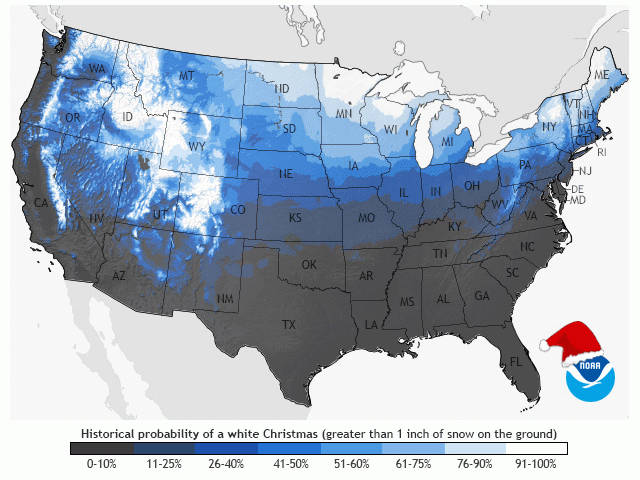
A weak La Nina is in place this winter, but it will not stick around long. What is expected for this spring and summer?

A weak La Nina is in place this winter, but it will not stick around long. What is expected for this spring and summer?

Slow-changing upper-air patterns tied to record-high world temperatures support winds driving catastrophic fires in the far West.

Some roller-coaster temperatures will occur this week, but we'll fall down the big hill this weekend after a cold front sweeps through the country.

Mountain snow water content in the Upper Missouri River basin is from one quarter to one third below average at the start of 2025.

After a big winter storm dropped 6 to 12 inches of snow and a band of freezing rain across the middle of the country this past weekend, another storm is set to bring more snow and freezing rain later this week.

A storm system will bring a band of heavy snow, a zone of freezing rain, and the potential for severe weather Jan. 4-6.

Hurricanes, heavy rain and drought sharply reduced the harvest of coffee, cocoa and oranges in 2024.

Forecasts predict a severe cold snap for early 2025 in areas east of the Rockies. A major storm system Jan. 4-6 will usher in arctic air, potentially breaking temperature records and disrupting travel.

While it may seem like snow depths on Christmas have been trending down during the past few decades, that may not be entirely true.

There are signs that the atmosphere is changing, and a very cold pattern will set up across the U.S. and southern Canada for early to mid-January.

Lake-effect snowfall of 5-6 feet in late November to early December utilized record-warm conditions in most of the Great Lakes.

A clipper system will move from the Canadian Prairies through the northern U.S. Wednesday through Friday. The system will produce some heavy snow along its path and bring a burst of colder air.

Storm analysis finds climate change increased the wind speed for every hurricane in 2024.

A chaotic December pattern has led some to believe that the chances for a white Christmas are higher than average this year. Will that turn out to be true?

DTN/Progressive Farmer writers were asked to think back on their year and choose a favorite story they wrote. DTN Ag Meteorologist John Baranick said the total eclipse that occurred on April 8, 2024, was one of the most memorable events of his life.

Crops may be dormant in the United States, but Australia is amid their winter harvest. They may have to dodge showers throughout the harvest to bring in their potential record-breaking crop.

A taste of true winter temperatures has settled in during the last week. Arctic air has been forced into areas east of the Rockies and that continues all this week, too. However, warmer air will get pushed eastward this weekend. Systems are still forecast to move through next...

A 35-point rise in USDA's winter wheat index during autumn 2024 shows more evidence of heavy November rainfall.

Cold air will be spreading east of the Rockies behind a storm system that is moving through Wednesday and Thursday. Some very cold weather, the coldest of the season so far, will settle into the Central and Eastern U.S. But how long will this last?

Winter wheat ratings are now the highest this decade after generous rainfall over the past 30 days.
DIM[2x3] LBL[blogs-ag-weather-forum-list] SEL[[data-native-ad-target=articleList]] IDX[2] TMPL[news] T[]
DIM[2x3] LBL[blogs-ag-weather-forum-list-2] SEL[[data-native-ad-target=articleList]] IDX[5] TMPL[news] T[]